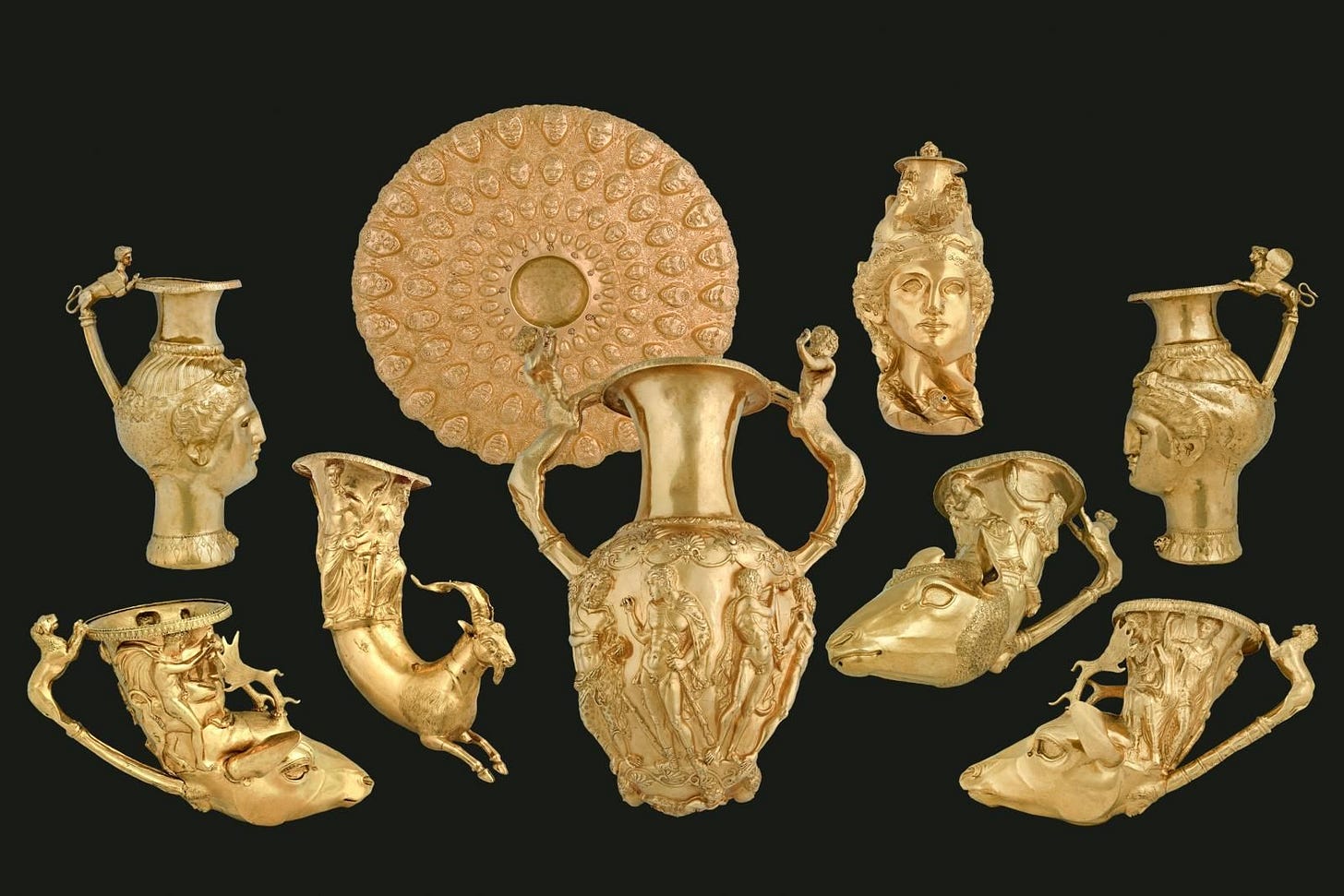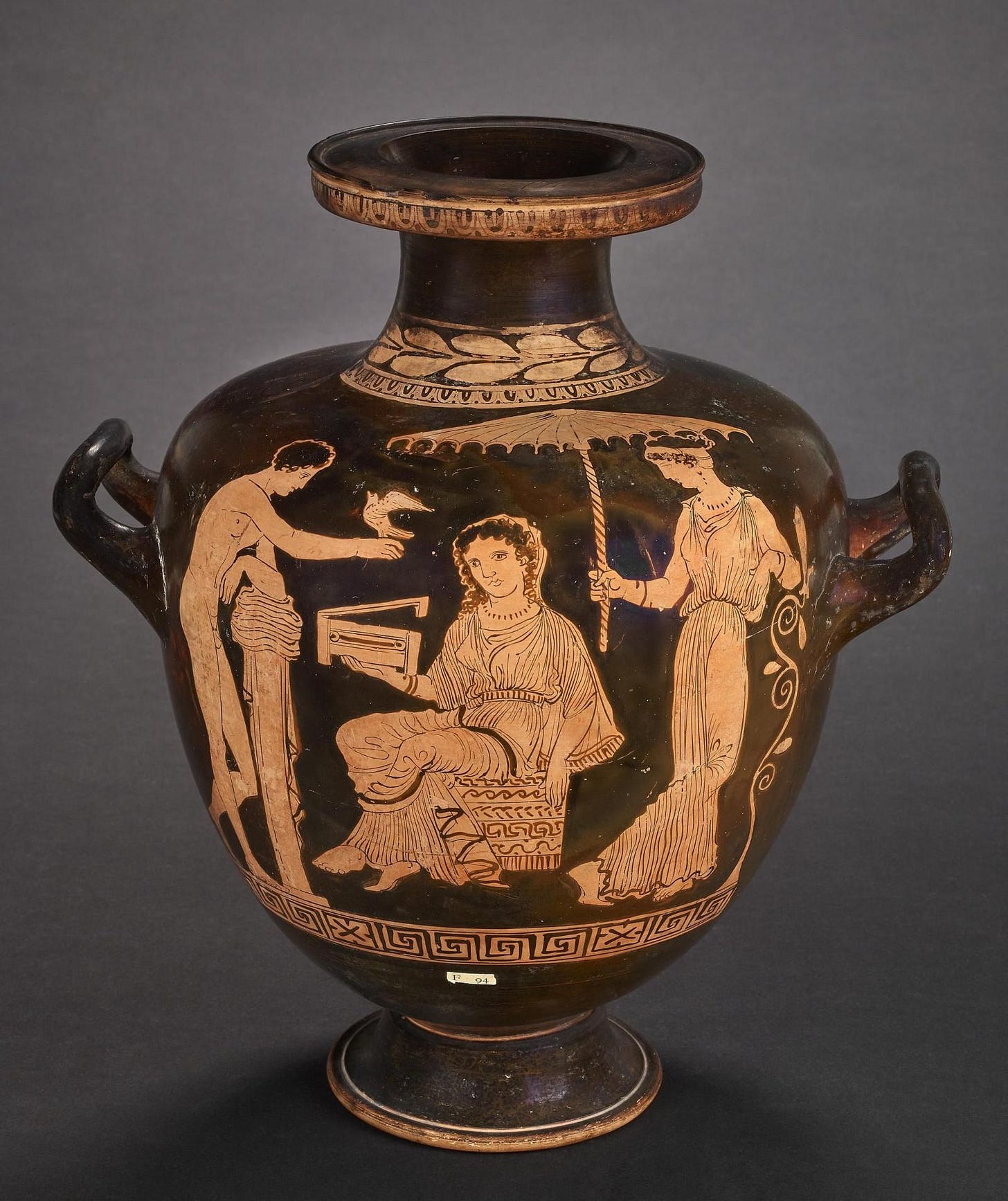⛱ Parasols and power: The surprising status symbols of the past
Recently, I visited the stunning “Luxury and Power: Persia to Greece” exhibition at the British Museum. Spanning Persian and Hellenistic cultures from 550-30 BC, it explores the nuances behind luxury’s relationship to authority — beyond the familiar Greek narrative of decadence undermining the mighty Persians.
Although small, the exhibition has a trove of artefacts, including the magnificent Panagyurishte Treasure on loan from Bulgaria. This dazzling Thracian set reflects the craftsmanship that defined prestige in the ancient world.
As someone more familiar with Classical Greece, seeing the extent of Persian splendour firsthand gave me an introduction to their culture. I learned how the Greeks initially rejected foreign luxury goods but later integrated the Persian style. In matters of chic, the Persian kings were true trendsetters — the original influencers!
Our perspectives on luxury can shift in line with cultural trends. Like jeans in the Soviet Union, what is seen as decadence at one time can later become a desirable object based on changing ideals.
One artefact that stuck out to me was a hydria (water jug, in case you were wondering) from the 4th century BC Apulia depicting a woman relaxing in the shade of a parasol. Although parasols were markers of Persian royal status, these luxury items were adopted in Greece as a feminine accessory — basically, the Birkin bags of ancient times.
Elia Kabanov is a science writer covering the past, present and future of technology (@metkere)
Photos: National Museum of History (Bulgaria) and the British Museum.



